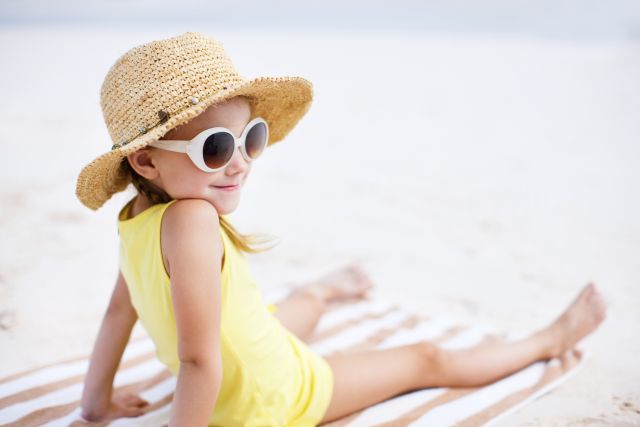Perhaps you’re quick to make sure your kids wear sunglasses when you hit the beach or the pool. But do you take the same precaution when they’re just playing outside in the backyard or walking around the neighborhood? If your answer is no, you could be putting your child’s vision at risk down the road.
According to a 2014 survey by the American Academy of Ophthalmology, less than a third of parents make their kids wear UV-blocking sunglasses. That’s a huge problem because years of overexposure to the sun can raise a child’s risk for developing eye problems down the road, including cancer of the eye or eyelid, cataracts, macular degeneration or possibly even blindness. It’s even more important if a child has blue, green or hazel eyes. While people with any eye color can develop UV-related eye problems, the American Academy of Ophthalmology warns that those with light eyes are more susceptible to developing rare eye cancers, like iris and uveal melanomas.
Why Kids Eyes are More Vulnerable
All people are at risk for eye damage from being exposed to the sun, but children and teens are the most at risk. The ocular lenses of their eyes aren’t mature, which means that their eyes aren’t able to filter out as much UV radiation as an adult eye. This can cause serious damage to the retina, the tissue at the back of the eye that makes sight possible.
Protect Kids’ Peepers
Don’t put your child’s eyes at risk of sun damage. Follow these sunglass strategies to protect his or her baby blues (or browns or greens):
- Check the label. Not just any pair of sunglasses blocks UV rays. The American Academy of Ophthalmology recommends only buying glasses that are labeled “UV400” or “100% UV protection.” These sunglasses filter both UV-A and UV-B rays.
- Color coordinate. You want to find sunglasses that are dark enough to reduce glare, but aren’t too dark to distort the colors. NewYork-Presbyterian Hospital recommends choosing a lens tint that blocks between 80 and 90% of transmissible light. Neutral gray, amber, brown or green are all good color options.
- Make a fashion statement. Pick sunglasses that wrap all the way around your child’s head. Younger kids may need to wear sunglasses with a Velcro strap that helps keep them on. You also want the lenses to be large enough to completely cover your kid’s eyes. These offer the best coverage.
- Don’t let the clouds fool you. Just because it’s overcast doesn’t mean you should leave the sunglasses at home. Damaging UV rays can go through clouds and burn both your skin and eyes.






